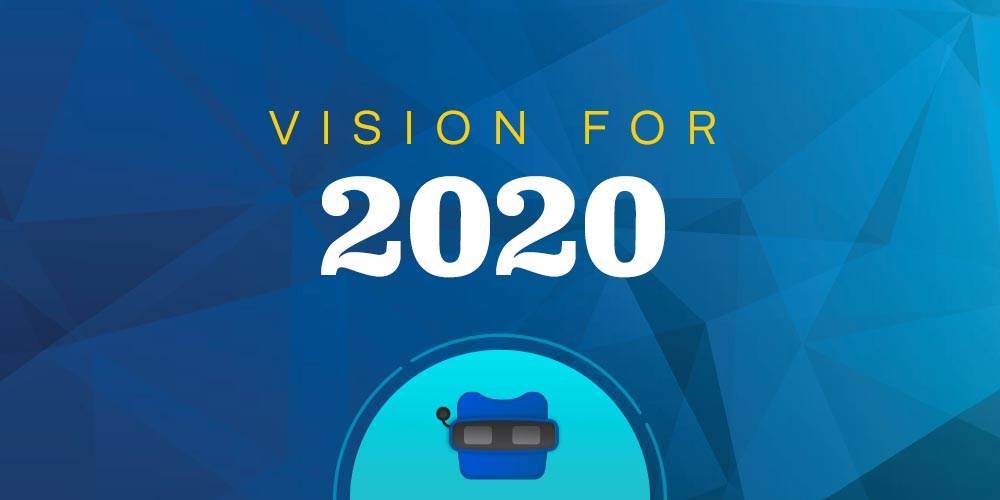
What do websites need to be ready for in 2020?
Here at LRS Web Solutions, we’re on a daily website watch – always looking to improve our methods in website development. With the new year and new decade, website development is changing faster than we’ve ever seen in our nearly 25 years in the website development industry.
The essence of our strategy is to craft a rewarding experience for your users and customers and guide them to become your customers. We call this UX or “User Experience.” All elements of the overall presentation to the end-user should be considered.
So how can you keep your website at the forefront of amazing UX? Here’s a roundup of 10 things on our watchlist as our vision for 2020 – and the decade ahead.
Our 2020 Watchlist
Cybersecurity. Security is an evergreen web development topic. Make sure your site is locked down with SSL and strong, secure hosting. Otherwise, you could get hacked like Macon County Circuit Clerk.

Mobile-First Design. Mobile usage will continue to gain popularity, as it should. The Pew Research Center found that 81% of Americans own smartphones. With more people using their handheld devices over industry laptops, website architecture is built with a mobile-first mindset, and designers follow suit in their visual concepts for mobile and desktop. Google considers a website's mobile usability as one of its ranking factors. You can check your website's mobile usability with various checkers. Read our blog post to review 6 easy questions to check if your website is mobile-friendly.
Page Load Times. Load time is a big part of giving visitors a great experience. How long will they wait for content to load? 3 seconds, 5 seconds? More progressive page-load development, as opposed to loading spinners, is being implemented. Our developers understand the importance of fast loading content and queuing the important/above the fold info first.  Always be looking to see how you can make your website faster. Check your Google Analytics to see page loading times and identify which pages are the top offenders.
Always be looking to see how you can make your website faster. Check your Google Analytics to see page loading times and identify which pages are the top offenders.
Page Speed. Working in tandem with a mobile-first approach and page load times, page speed is one of Google’s 200+ ranking signals. In 2020, Google watchers say it may even label slow-loading sites with a “badge of shame.” How fast is your website? Ask Google Page Speed Insights. If it’s above 3 seconds on mobile, it needs some help.
AMP (Accelerated Mobile Pages). Building on items 3 and 4, AMP is a growing trend that is going to set a lot of business websites apart from the pack. More than 30 million domains had adopted AMP in 2018.
High-Quality Imagery. We’re continuing to see a backlash against cheesy stock images. Users are starting to understand that stock photos just aren’t genuine and don’t help tell their story. Similarly, rethink the formerly-trendy carousel of images – Do you wait for the fifth or sixth image to roll by a website’s homepage screen? We didn’t think so. One or maybe two featured “hero” images with a strong call to action is all you need. Change it often if you like.
Accessibility. If you’ve been ignoring your website’s accessibility, now is the time to start paying attention.

Not only are you potentially losing customers, but lawsuits in this area are gaining traction.
Make sure your website is compatible with screen readers and other assistive technologies. Web professionals can make sure your site is accessible at launch time, but as you add content, images, PDFs, and other extras, make sure that you maintain the WCAG 2.1 standards. Run your site through an accessibility checker or ask your web developer for help at least once a year.
Push Notifications. These are not for apps only now. This is an extremely powerful way to engage people with PWA (Progressive Web Apps). Push notifications will pop up when the user is not engaged with your site. They will get alerts for new content, discounts, promotions, blog posts or upcoming events. It’s even better when you can personalize them.
More Negative Space. Another way to put this is to understand how your web designer uses white space on your site. White space/negative space - gives your eyes a rest from an overload of content and advertising. White space can help focus users on the content you want them to absorb. Web firms are helping drive home the point that less is more, and people don’t read -- they scan on the web. Short, scannable content wins.
Optimize Content for Voice Search. More people are getting voice-activated devices for their homes (like Alexa, Google Home, Apple HomePod and more on the way) and using other voice-activated devices like Siri. That means that people are talking to devices instead of typing. Make sure your content is written in a way that lends itself to answering voice searches (i.e., limit jargon and keep the verbiage simple). As always, content is king, according to Google. Make sure that your content is fresh, relevant, and answers users’ questions.
Whew! That’s a lot to keep track of when you’ve got other tasks on your professional plate. If your head is swimming, ask LRS Web Solutions to help. We’re keeping pace with the change and we’re just a Helpdesk ticket away from helping you!
Not a current client? Submit a ticket anyway. We'll try to help you if we can.

Ready for a new website in 2020?
Contact us to receive our Vision 2020 licensing discount!
Sources: searchenginejournal.com/top-3-google-factors/308147/amp/
globalme.net/blog/top-8-voice-apps
pewresearch.org/internet/fact-sheet/mobile/
talkbusiness.net/2018/01/pew-survey-almost-half-of-americans-use-voice-controlled-ai/
searchengineland.com/accelerated-mobile-pages-are-they-worth-it-310834